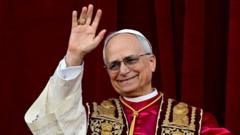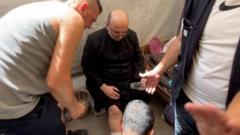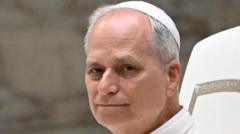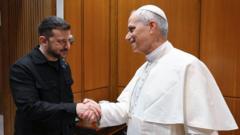The Vatican witnessed a historic appointment on Monday as Pope Francis named Sister Simona Brambilla as the prefect of the Dicastery for Institutes of Consecrated Life and Societies of Apostolic Life, making her the first woman to head a major Vatican office. This office oversees both male and female religious orders, encompassing over a quarter of the world’s priests and hundreds of thousands of women in religious communities.
Pope Francis's decision is aligned with his ongoing commitment to enhancing women's leadership roles within the Catholic Church. Sister Brambilla's elevation follows a trend of appointments made by the Pope, which includes several women in high-ranking positions, such as the director of the Vatican museums.
This milestone was greeted with enthusiasm by some experts, including theologian Anne-Marie Pelletier, who emphasized its groundbreaking implications for women in the church. "It’s something completely new,” she noted, marking this appointment as a pivotal moment for women's representation.
However, the announcement also included Cardinal Angel Fernandez Artime as a co-leader or pro-prefect of the department, raising questions about how responsibilities will be shared. Critics like church historian Lucetta Scaraffia have interpreted this dual-leadership as potentially undermining Sister Brambilla's role, suggesting it might serve as a form of "window dressing" rather than genuine progress.
The Dicastery that Sister Brambilla will lead plays a critical role in the governance of men's and women's religious orders, with recent statistics indicating that approximately 128,500 priests belong to various religious orders, compared to nearly 600,000 women in religious life. The new leadership structure will not only address the needs of these groups but also manage numerous lay movements affiliated with the church.
As Sister Brambilla embarks on her new leadership journey, the implications of her appointment will be closely observed by advocates of gender equality in the church and beyond.
Pope Francis's decision is aligned with his ongoing commitment to enhancing women's leadership roles within the Catholic Church. Sister Brambilla's elevation follows a trend of appointments made by the Pope, which includes several women in high-ranking positions, such as the director of the Vatican museums.
This milestone was greeted with enthusiasm by some experts, including theologian Anne-Marie Pelletier, who emphasized its groundbreaking implications for women in the church. "It’s something completely new,” she noted, marking this appointment as a pivotal moment for women's representation.
However, the announcement also included Cardinal Angel Fernandez Artime as a co-leader or pro-prefect of the department, raising questions about how responsibilities will be shared. Critics like church historian Lucetta Scaraffia have interpreted this dual-leadership as potentially undermining Sister Brambilla's role, suggesting it might serve as a form of "window dressing" rather than genuine progress.
The Dicastery that Sister Brambilla will lead plays a critical role in the governance of men's and women's religious orders, with recent statistics indicating that approximately 128,500 priests belong to various religious orders, compared to nearly 600,000 women in religious life. The new leadership structure will not only address the needs of these groups but also manage numerous lay movements affiliated with the church.
As Sister Brambilla embarks on her new leadership journey, the implications of her appointment will be closely observed by advocates of gender equality in the church and beyond.





















